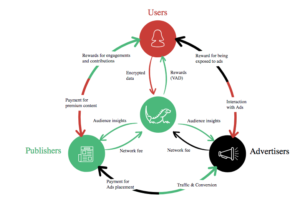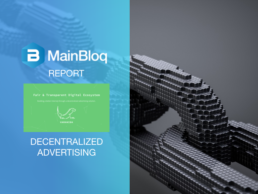Zcash Hard Fork Scheduled Before Halloween
Zcash is an open, permissionless cryptocurrency designed to protect privacy. It is the creation of Zooko Wilcox-O’Hearn, who is also known for “Zooko’s triangle” and the Majo Nation P2P system.
The news is that the founders have just released their version 2.0.0. They are encouraging all users and miners to upgrade to the new version as quickly as possible.
The great thing about 2.0.0? It is “Sapling compatible.” Sapling is the term used in the Zcash orbit to refer to an upcoming hard fork, expected on October 28, that will amount to a major protocol upgrade, allowing shielded/private addresses to be supported by mobile and hardware wallets, exchanges, and payment processors.
October 28th will also be the second anniversary of the official launch of Zcash.
Facebook and a Crypto Payments Network
Business Insider reports that Facebook has been talking to an open-source payment-tech company, Stellar, about ways in which FB might use blockchain technology.
The gist of the talks is that FB, which has a blockchain apps team led by David Marcus, wants to push into finance and go head to head with the payment networks of the big banks.
One of the most commonly cited benefits of blockchain over traditional payment processing is … speed. A recent JP Morgan Research Note contrasted a transaction on Ripple, that took took four seconds, with one of a traditional banking system, which took three to five days.
An anonymous Stellar insider apparently told BI that if Facebook does team up with Stellar, “They’d be taking the rug out from under the banks.”
CCN.com goes another step, suggesting that Facebook is planning to fork the public Stellar chain rather than relying on the public Stellar chain, and that it may create its own digital token.
Blockchain Enthusiast Runs for Governor
Congressman Jared Polis is the Democratic Party’s nominee for the position of Governor of Colorado, as the consequence of a primary in June of this year. He is also a blockchain enthusiast, who says he wants to make Colorado a “hub for blockchain innovation in business and government.”
Po, about lis detailed his ideas for blockchain related initiatives, with a certain between-the-lines glee, in an August 8 announcement on his website. He says, for example, that he would create “a statewide safe harbor designed to exempt cryptocurrencies from state money transmission laws,” that he would explore blockchain-based solutions to improvement of the state’s energy grid, and that he would digitize government records, making the state’s contracts and expenditures more transparent.
Polis commends retiring Governor Hickenlooper with having made “progress” toward encouraging blockchain tech in the state and he says he would build on that.
A Public Firm ICOs in Singapore
Y Ventures Group, (the Group), which describes itself as a data analytics driven eCommerce company, went public on the Singapore Exchange last year. This year Y Ventures has become the first publicly listed company in that City State to launch an ICO. It almost certainly won’t be the last. There is a lot of Singaporean interest in cryptos.
The Group is setting up an eCommerce buying platform that will focus on cross-border purchases on behalf of consumers. It calls this the AORA platform, and its utility tokens are intended for use thereon.
Luminore 8, the subsidiary of Y Ventures that will be responsible for establishing the platform, has struck a deal with Singapore Post Ltd., and together they will “explore possible enhancements to the E-commerce parcel logistics chain utilizing new technological processes for warehousing and last mile delivery.” Luminore 8 has also issued a white paper that sets out details on the proposed ICO, the AORA Platform and AORA Coins, available here.
CAHrenheit and the Cars of China
CAHrenheit, an enterprise backed by some of the heavy hitters of China’s ride-sharing ecosystem, looks to use blockchains to shake up the market for buying and selling second hand cars.
At the heart of the business case they make there say they’ll offer a decentralized system of listing, ratings, and review based on real transactions, verified by blockchain. This could be coupled with Internet of Things devices that could be installed in cars providing real-time performance and condition data. These devices could also do the system’s mining, growing the supply of tokens.
An analyst at Hacked cautions against too much enthusiasm, saying that CAHrenheit “is in a very preliminary stage with no working product, barely defined token economy, no concrete details on token sale, etc.”
Still, the idea is intriguing. On the one hand, used car dealers will benefit from participation by “better customer acquisition and retention by establishing a trustworthy presence … or using CAH tokens for targeted promotional campaigns.” On the other hand, buyers benefit by a reduction in the asymmetry of information that has so characterized the automotive aftermarket since around the time horse-drawn carriages went out of style.
Etheremon Moves to Zilliqa
Etheremon, a game that brings Pokemon-style creatures to life through the Ethereum blockchain, is moving at least part of its operations to Zilliqa, a DApp platform, out of frustration with Ethereum’s scalability issues.
For the uninitiated, Pokemon is a huge Japan-based media franchise built around fictional creatures (of more than 800 species) that the human players of the game capture and train for fights.
Ethereum is still the dominant platform for decentralized gaming, with a great ecosystem of developers and community members. And at least for the immediate future, Etheremon progress and assets will remain, so to speak, on the Mothership. But the battles among the monsters will take place on Zilliqa, which will make them cheaper and faster.
Ethereum, scalability, and gaming … this combination has worried some observers since the CryptoKitties mania of November -- December 2017. On December 5, Ethereum reported that there had been a sixfold increase in the pending transactions on its chain since Axiom Zen had begun releasing its “kitties,” just a week before.
Tutellus (TUT) Gets Beyond Halfway There: ICO
Tutellus, the largest educational platform in the Spanish-speaking world, and a decentralized and tokenized educational platform at that, is in the midst of its ICO. It’s looking for $40 million and has this far raised roughly $22 million.
The ICO token price is one nickel (US$0.05) per TUT.
Tutellus has a fascinating approach. The best students may study for free and, in fact, may earn money through tokens. Students who finish a course get “smart TUT” (STUT) tokens based on the value of their submissions of projects and related works, their participation in evaluations of other students, their participation in tutorials with other students, etc. STUT tokens themselves will not be directly tradeable outside the Tutellus system, but up to half of them may be converted to TUT, which in turn will be tradeable into other cryptos or fiat currencies.
Employers are also brought into the system, which is designed to help them “find the perfect fit for a position or contract,” as the TUT white paper says. Employers may buy access to the profiles of students by buying TUTs, in the process, they’ll help fund the whole ecosystem.
The Intercontinental Exchange
The Intercontinental Exchange, the parent corporation of the New York Stock Exchange, has announced a new platform, Bakkt, which will list a physically settled one day bitcoin futures product.
ICE will serve as the custodian for all assets stored on the Bakkt platform, in the expectation that institutional investors (pension funds, endowments, insurers) will be less hesitant, given this unimpeachable custodianship, to place a bet on an asset class of which they otherwise might still be wary.
This could be a very big step in the mainstreaming of Bitcoin. Bakkt will “seek to develop open technology to connect existing market and merchant infrastructure to the blockchain.”
Kelly Loeffler, the CEO of Bakkt, has been the chief communications officer of ICE for 18 years, and before that -- at the turn of the millennium -- she was an equity research associate at William Blair.
Launching “LGO Launch”
Legolas Exchange (LGO), a new cryptocurrency exchange that ICO-ed in February 2018, reached its hard cap in just a few hours. It says that it is “delighted” with the unexpected sequel, that it has continued to receive “inquiries from different entrepreneurs involved in the blockchain space from all around the world” seeking help with their own tokens.
Accordingly, LGO has announced the creation of a new agency within the LGO Group that will be specifically devoted to ambassadorial/advisory work, aimed at providing “enterprise-grade token generation services,” and known as LGO Launch.
Since the LGO brand will be involved, LGO Launch is going to be particular about the clients it takes on. The article in Medium that explains the creation of this new agency is largely devoted to outlining what blockchain entrepreneurs have to present to LGO to be deemed suitable for this assistance.
“In essence,” the article says, “we approach our potential clients the very same way in which investors would approach them. We ask the same questions that potential investors would ask, and evaluate their responses using similar methods.”
Varanida: the Monitor Lizard of Internet Ads
The term “Varanida” comes from the official scientific designation for a monitor lizard, the Varanidae. This genus got the less formal name “monitor” due to the way in which such lizards will sometimes rear themselves up on their front legs to get a good look around, to monitor their environment, as the little fellow in the Varanida logo seems to be doing.
The omnivorous appetite of these creatures has given them a reputation for cleaning out mangroves and fields. Thus, they are a suitable mascot for a technology designed to clean out the messy internet marketing ecosystem.
Accordingly, in this newly announced project, Varanida, a company based in France, promotes a Verified Ad Program (VAD) in an effort to redefine internet marketing, using blockchains for their decentralization, fraud-resistance, and transparency.
The User Interface
Varanida has developed an add-in or extension for Google Chrome and Mozilla Firefox browsers. The extension will allow the internet user, including one with no technical sophistication, to block irritating internet ads, as detailed in their White Paper.
That idea isn’t very surprising, there are lots of ad blockers out there. What is more important, the user of Varanida’s extension, in blocking ads for him/herself, is helping to block them for a broader network of users as well (which might be a satisfying fact in itself) and is earning tokens with real near-term uses. We’ll get back to those points soon enough below.
Enthusiastic Founders
The CEO, and one of the founders of Varanida, is Anji Ismaïl, a blockchain enthusiasts who advises on a number of blockchainprojects, and who has created a cryptocurrency mining operation.
Varanida is a new expression of Ismaïl’s established interest in internet marketing. He is also the co-founder of DOZ.com, which he once described to Venturebeat as “the Uber of marketing campaigns.” The idea behind it was that a website owner should be able to order up a marketing campaign remotely, from the cloud so to speak, from marketers who (like Uber’s drivers) are paid per task.
The restructuring of Varanida has a much broader scope and purpose than that of DOZ but it is in the same line of progress. And one of Ismaïl’s co-founders is Faouzi El Yagoubi (also a co-founder of DOZ). The other is Thomas Schmider.
El Yagoubi is the chief technology officer, Schmider (whose resume includes the co-founding of Infogrames, the company that in due course purchased Atari) is the chief operating officer.
Yagoubi recently contributed a thoughtful piece to Medium about blockchains, decentralization, and encryption, one which helps make the thinking at Varanida transparent. He said that decentralization has many benefits, but there are some processes that just can’t be accomplished “the way we need them to be” without centralization. He wrote that Varanida’s real-time billing system will need to handle “real-time workloads and still provide a high level of fault tolerance” so the management group is “considering a hybrid approach, with a centralized computer system, and a decentralized ordered-hash storage system” to provide “the best of both worlds.”
Other Members of the Team
The other members of the managerial team include three distinguished software engineers: Pierre Antoine Meley, Mickael Crozes, and Marc Vicenti.
Meley has an electronics, information tech, and signal processing background. Crozes, who has a masters in computer science from SUPINFO International University, comes to Varanida with a lot of technical infrastructure experience at Amazon.com. Vicenti has a background in artificial intelligence and signed his first transaction with the Bitcoin Mainnet in 2012.
Also on board: Mathieu Sibille, senior vice president of business development (with experience in APAC, EMEA, and eastern Europe) and Jon Lord, senior ad tech consultant, who managed international sales and account teams at TradeDoubler and, more recently, worked at Criteo, a company that provides personalized online display advertisements.
Media Savvy Advisors
Varanida’s line-up of early investors and advisors displays a valuable range of backgrounds and new/social media savvy.
These advisors include, for example, Joel Comm, the bestselling author of The AdSense Code (2006) and Twitter Power (2009).
Also: Jean Christophe Conti is in. Formerly he was VP and head of the partnerships group at Yahoo where he was in charge of all partnerships, both desktop and mobile, in EMEA for: the Yahoo Display Ad Network, Yahoo Search Affiliate Network; and Right Media Platform & Exchange. of Sales for the Publishers Business Unit EMEA at AppNexus. More recently, Conti has been VP of Sales for publishers business unit, EMEA, at AppNexus.
Further, there’s Thomas Hessler, an early blockchain enthusiast and a co-founder of former CEO of Zanox, which under his leadership grew to become a global market leader in performance based online marketing until, in 2007, it was acquired by two media giants Axel Springer (Germany) and PubliGroupe (Switzerland).
We’ll mention just one more name from this field: Frédéric Montagnon is an early investor in and advisor to Varanida. Its white paper describes him as “a very active angel investor in various technology sectors.” He launched both Secret Media (an ad blocker monetization company) and Legolas Exchange (a decentralized crypto-exchange). This January Legolas raised more than $35M through its ICO in January 2018.
Montagnon recently predicted, to a reporter for a magazine that reports on the luxury industry: “Really soon everybody will be using blockchain technology in their daily lives without even noticing it the same way you use the Web without a deep understanding of how TCP-IP or HTTP works." [The point of the story was that blockchain would reduce the counterfeiting of luxury brand name goods.]

Users, Marketers, Publishers
How Varanida benefits to Publishers
But let us return to what these individuals, combined in the persona of a lizard, are up to. The Varanida white paper looks at a number of the problems that now attend internet advertising from three different points of view: that of the users, the advertisers, and the publishers of internet content.
Most users surveyed (91%) agree that ads have become even more intrusive than they were just two or three years ago. Users don’t necessarily believe that ads are bad, but the clutter of ads makes it difficult to distinguish which ones might actually be offering something valuable. Also, users are concerned that they’ve lost control over how their personal data is employed once it is ‘out there’ on the net. Indeed, most users (86%) say they have taken steps to remove digital footprints because they don’t like being targeted and pursued by the demographic characteristics and interests they have displayed.
How Varanida benefits to Advertisers
From the point of view of the advertisers, of course, “banner blindness,” the condition in which users have learned to ignore ads and focus on content, is undesirable. Marketers want their ads to reach people, and not merely to be there on the screen. The average click-through rate for a banner ad is now around 0.05%, which is enough to make one nostalgic for the ‘90s and grunge rock.
From a publishers’ point of view, too, the system is broken. Two fifths of publishers report that their ad revenues are now static or declining. They face a problem of scaling. Only a small number of publishers have the technical capabilities or the audience size necessary to serve the needs of the large advertising clients. The advertisers know this and are increasingly avoiding the small and even medium sized publishers. So even though more money than ever before gets spent on digital advertising -- if a publisher isn’t Google or Facebook, it probably isn’t getting much of it.
Meanwhile, younger users (the most desired eyeballs in the system) have caught on to the availability of ad blockers, which the Varanida white paper calls “the publishers’ nightmare.” Ad blockers now on the market don’t give users a lot of control, they aren’t customized to let users view what they would regard as useful advertising while blocking the rest.
For the reasons mentioned here, and others, it is clear to the people driving Varanida that internet advertising will have to change. Their goal is to mold that change.
How the Lizard will Work
The underlying idea is that Varanida will but itself in the center of this triangle of dissatisfied parties: users, marketers, and publishers. Users will agree to look at high-quality advertising, and will receive VAD tokens when they do. So the users win.
Advertisers and publishers will each pay a network fee. But they also win, because the new system will solve their problems as discussed above. Publishers -- except presumably for Facebook and Google, which might both want to preserve their unique status under the present system -- win by paying a fair value price for their advertising and preserving their engagement with the audience. The advertisers win by getting a fair and transparent advertising network.

Blockchain technology is the key is achieving all this. As the white paper says, the prototype will work through the Ethereum Network, which the managing team considers the best network available at this stage in the development cycle for blockchain technology. But they will be developing their own blockchain at the same time. They have several solutions to achieving that goal under consideration, and they will be “communicating our test results as well as our final decision” on the basis of the Varanida Blockchain.
However the particulars are ironed out, the idea is to deploy “a crowdsourced advertising validation through the validation by users of the quality of the advertising.” This will be a fraud-proof system, allowing for trust within the triangle of parties just described.
The network fees will be a minute portion of advertising spend. Publishers will be earning more money from the ads they show than at present, because getting onto the Varanida network will mean cutting out the middlemen.
As noted above, the prototype phase involves the VAD token, an ERC-20 token on the Ethereum Blockchain. Users will agree to view ads, and will decide to block certain of the ads, those they deem low quality, from the network. Every time a user blocks an ad, he or she is to be rewarded with a token. Thus, they will be contributing to a list of blocked ads and advertising scripts stored on the blockchain.
Data and Tokens
Users also own their own data. They can agree to share their personal data in encrypted form and thus help guide the network’s advertisers. For this, too, they will re rewarded with tokens. Further, how much data they will share will allow a choice with various levels, rather than “all” or “nothing.”
The network will develop various uses where the VAD earned in this way can be spent. As an important example, users will be able to transfer VAD to publishers and content creators. Varanida envisions content creators welcoming this sort of payment as a measure of independence from direct ad revenue correlated to “clicks.” If so, then content creators will be incentivized toward creating better content rather than “clickbait.”
Over time, too, VAD tokens will become tradeable for other cryptocurrencies, and for fiat currency.
Publishers will also earn VAD tokens based on an auction to take place on a Real Time Bidding platform, so anything they receive from users as described above will be in the nature of a “tip” for reward-worthy content.
Publishers, in turn, will be in a position to offer VAD tokens as incentive for comments on articles, for sharing on social media, or for contributing additional content.
Timeline of the Token Sale
2018
June 26, End of Round 0. Private re-sales had offered 50% discount on tokens. In terms of ratio to bitcoin this meant 0.00000570 BTC/VAD. The result was the sale of 1.46% of the total token supply.
June 27, Round 1, an invite-only round, [though the interested are invited to request an invite] begins. The minimum contribution for this round is 3 BTC, or 30 ETH, and the target is to sell 30.15% of the new tokens. They’re selling at a 30% discount, or 0.00000900 BTC/VAD. Click here to request an invite.
August 15, Round 2, sales open to the public, begin. The public of course is subject to know-your-customer rules. The discount is down to 10%, and the target is the sale of 20.10% of the tokens.
September 15, Round 3, also open to the public. No discount. There is no fixed date for the end of Round 3. Varanida expects to sell a total of 67% of its tokens in these rounds. As to the remaining 33% of the tokens, their distribution shall be as indicated in this graph.

What the VAD is Not
The token sale announcement issued at the start of Round 1 cautioned that a VAD is not any of the following:
- is not a financial instrument, within the meaning of EU Directive 2014/65/EU of the European Parliament and of the Council of 15 May 2014 relating to markets in financial instruments,
- is not proof of ownership or a right of control It does not confer any right on any asset or share in Varanida,
- is not an electronic currency within the meaning of EU Directive 2009/110/EC of the European Parliament and of the Council of 16 September 2009 relating to access to and pursuit of the business of electronic currency institutions,
- does not qualify as a payment service within the meaning of EU Directive (2007/64/EC) of 13 November 2007 relating to payment services in the internal market, nor within the meaning of the (EU) Directive relating to payment services 2 (DSP 2) N° 2015/2366 of the European Parliament and of the Council of 25 November 2015.
VAD is, rather, “a cryptographic token used to run the Varanida Protocol, unregulated, digital asset, issued and controlled by its developers, and used and accepted only by the members of a given community.”
Varanida’s Competition
Since the troubles associated with internet advertising are not secret, it is unsurprising that there have been and still are other projects aimed at addressing those troubles, Further, some of those other projects, like Varanida, employ blockchain technology. We’ll focus here precisely on those, the more direct, competitors.
AdEx, ADX, for example, is a blockchain based ad exchange, created with the expectation that decentralized apps (Dapps) would be build on top of the exchange.
Basic Attention, BAT, is the token associated with Brave, an open source browser blocking ads and trackers. BAT includes a ledger system that anonymously tracks user attention to reward publishers.
But Varanida is importantly different. Both ADX and BAT have centralized the ad blocking function. Advertisers understandably dislike centralized blocking, which they believe essentially involves holding their work for ransom. But Varanida wants to bring the advertisers on board as part of its three-sided system, and to this end Varanida’s system is transparent and decentralized with regard to its ad blocking. Advertisers can buy in, in the belief they’re getting a fair shake and that they can learn and benefit from the feedback they receive through the network.
Also, the Varanida system includes a reputation management feature that is not matched by ADX or BAT. The Varanida platform will “introduce a specific score presented in the form of VADkarma.” Advertisers will build up their VADkarma by proposing high quality ads. Publishers will build up theirs by displaying those ads on websites that meet Varanida’s guidelines on quality, Users, too, will have a VADkarma score, to which they will add as they rate both ads and the quality of websites.
For users, the direction of the score will move only upward, there will be no mechanism by which a user’s score can drop. But for publishers and advertisers, loss of VADkarma will be possible. The idea is to deter the creation or placement of spam.
A Little Jargon
With regard to reputation management, the white paper observes that it involves “a crowdsourcing task with boolean choices.”
Some readers might not be familiar with the phrase “boolean choices,” so here is a very brief tutorial. Boolean algebra is the branch of algebra in which the values of variables are “true” or “false,” usually represented as 1 and 0. The operations of Boolean algebra are AND, OR, and NOT. Thus, George Boole, writing in the 1840s, unwittingly laid the groundwork for the formal description of the operations of a digital computer.
Boolean choice here simply means that users reacting to an ad are doing something binary: thumb up or thumb down on the ad. These binary choices are then aggregated so that there is a binary choice at another level: the ad is either deemed approved or rejected. After the process is complete for a particular ad, that advertiser’s reputational score is either increased or decreased.
A Final Thought
The white paper might have been more forthcoming about the competitive challenges that Varanida will face. For example, Papyrus (PPY), a scalable blockchain protocol with many of the same expressed aims as VAD, seems a closer kin than ADX or BAT. Yet, although PPY is mentioned in the blockchain, it is only just barely mentioned, with a specific opinion, much less a cogent distinction. It would have been a suitable matter for further comment.
Nonetheless, the bottom line is that VAD enters the market to use blockchain technology to fill a need, straightening out the mess that is internet marketing in the later part of the second decade of the 21st century. The mess is real, and the arrow aimed at it seems the right one. The market for those arrows may be large enough to accommodate a number of archers.
Be sure to follow Varanida on social
Telegram: https://t.me/varanida
Twitter: https://twitter.com/Varanida_VAD
Facebook: https://www.facebook.com/varanidaVAD
Reddit: https://www.reddit.com/r/Varanida/
Discord: https://discordapp.com/invite/7CjdaXC
Download the app: https://www.varanida.com/download/











